We’re going to take a look at the industrial material extrusion 3D printers market for 2021. This includes the segments in this part of the industry, the market, sales channels and the types of systems this market has. We’re also going to examine some critical issues for competitiveness and give some recommendations to players inside and outside these segments. We’ll also specifically address the market outlook for each segment for 2021. Overall this is meant to be a high level view of the coming calendar year for Industrial material extrusion (FDM, FFF) printers.
Essentially we can divide this market up into the pro segment, entry-level industrial 3D printers/high-temperature 3D printers/medium format 3D printers, and large format systems. Due to the unwieldy nature of the “entry-level industrial 3D printers/high-temperature 3D printers/medium format 3D printers” category, we will refer to it as the “mid-market industrial” segment from here on. The pro segment desktop 3D printers has already been covered in a previous article on desktop systems. I include it here so that readers are cognizant of the fact that there will be pressure from below from the pro segment and other desktop systems in manufacturing and commercial use over the coming years.
The mid-market industrial category covers a number of different segments that I believe should be joined together into one industry segment. The reason for this is that essentially all of these players are making systems from $5,000 to $150,000 that accurately want to 3D print reliable parts in the 20-40-cm-squared range. Entry-level industrial systems try to be reliable and have high repeatability with better components than other systems. High-temperature 3D printers do the same thing, but with smaller parts that must capable of withstanding temperatures of about 400°C. Medium format systems are focused on having larger build volumes of up to a meter, but typically are also dependent on reliability and are often used for the same parts.
I’d be happy to reverse course and consider them different segments, but in comparing them I’ve found them to be very similar technically, in their construction, and in terms of their key differentiators. In terms of applications, the medium format systems are more likely to be used for outdoor advertising and the high-temperature machines will be applied to smaller aerospace parts, but overall they seem to be doing almost exactly the same things with a lot of the same considerations and strategies. I think that it would be helpful for people to know just how similar the architectures of these systems are to understand new potential printers and competitors.
Large-format 3D printers have build volumes of 1m-cubed or more. These large systems are used for big tooling, mold or construction components, and usually work with industrial robotic arms or large gantries. Examples of printers in this segment come from CyBe, Thermwood, Cincinnati, CEAD and more.
Mid-market Industrial
In this segment, customers are using systems to manufacture certified parts or reliably make thousands of parts. At the same time, most of these systems are now likely to be used for prototypes or by engineering groups to haphazardly print components.
Market
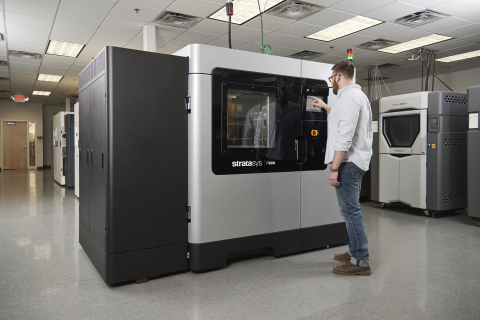
The market for these printers is lead by Stratasys. Especially in the high-end portion of this segment, their machines are the gold standard. High-end Stratasys systems continue to sell, but they are currently closed, limited in the number of materials that can be used, and the cost per part is high. Due to this, more and more inroads are being made with industrial systems from companies such as 3NTR and high-temperature machines such as those from Roboze and MiniFactory.
Generally, reliability and repeatability are high here, as compared with the rest of the FDM market. Customers are often industrial firms, design labs, machine builders, aviation companies, transportation companies and SMBs working in engineering in the broadest sense. ABS, PC, PA, PET, ASA, PEI, PEKK and PEEK are some popular polymers with glass- and carbon fiber-filled variants often relied on for end-use parts.
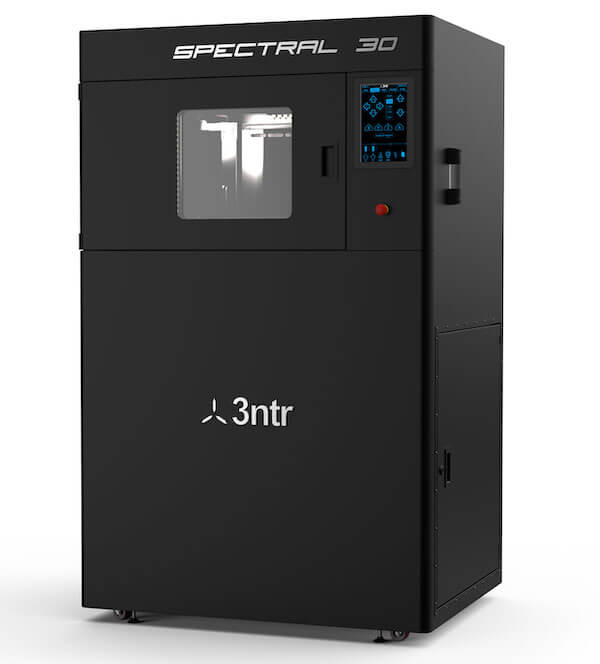
Sales
Many smaller players sell in the low hundreds or thousands of units. Regional companies or industry-specific solutions are quite present in this market. Channel dominates sales mostly and many companies in this segment have put in the time building a good worldwide channel.
Alternatives can be powder bed fusion systems, or pro FDM/FFF systems in clusters. Most often though, people in this segment want something that feels industrial, tough and can perform to spec. With relatively low-cost parts, low post-processing and high toughness and dimensional accuracy, FDM wins in those applications where looks are secondary to functionality. With regards to powder bed, FDM wins when larger parts are necessary or because it has a much higher availability of many polymers.
Systems
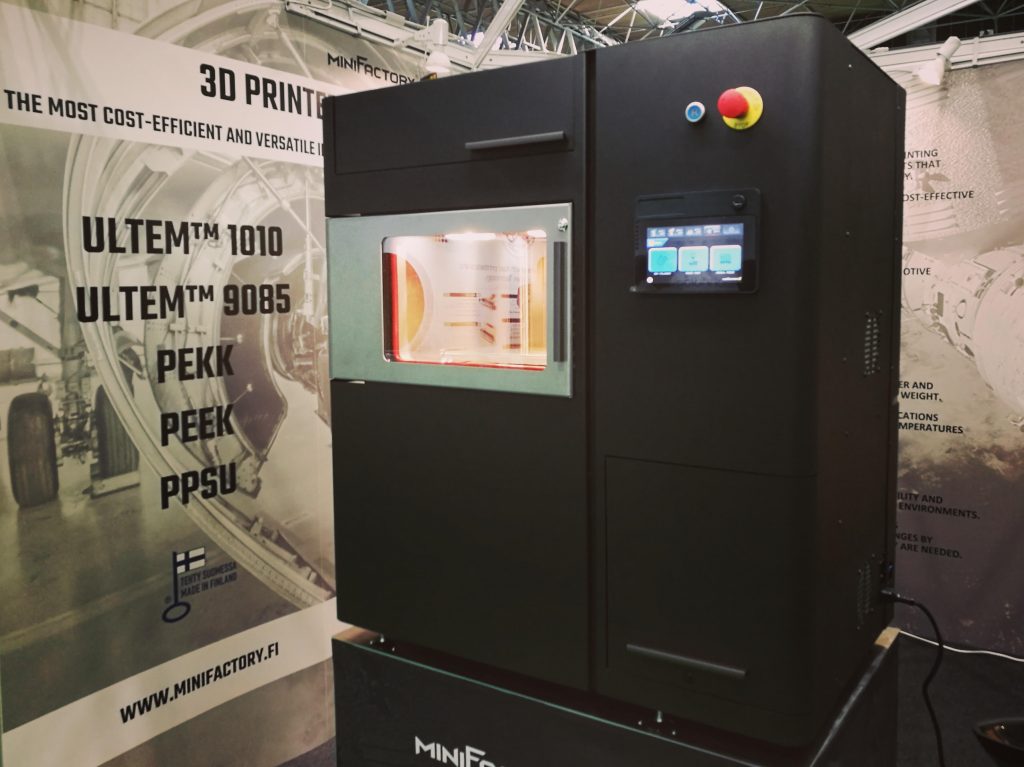
High-quality components, excellent reliability, traceability, monitoring, and repeatability are key for any and all printers in this segment. Better QA and monitoring is what is being explored at the moment, as is generally a tighter integration with print software and general business software, such as MIS or PLM. These systems are being more tightly integrated with software, overall have added QA features, and increasingly sport part traceability. Repeatability and the ability to produce certified components are key.
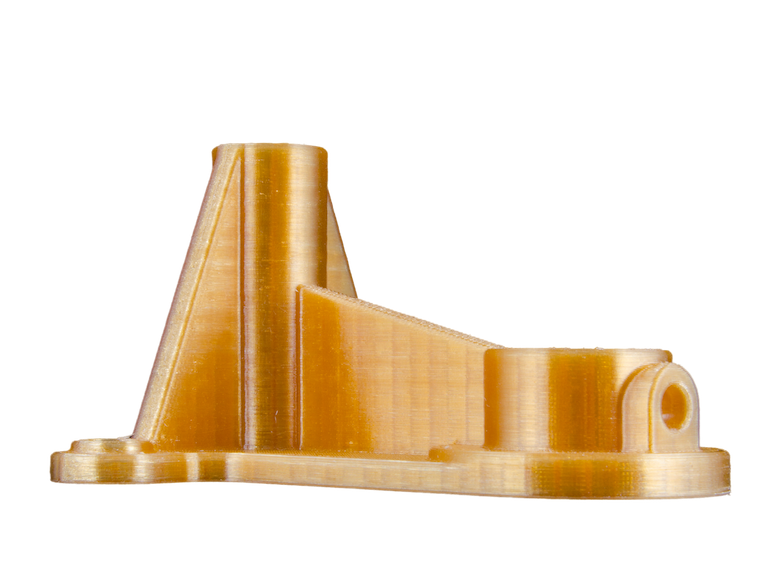
Recommendations
Typically in this segment, the application fit is a key differentiator. Being able to meet a specific proposition for a particular market participant can bring outsized benefits. Where powder bed fusion systems are often sold as a catch-all or general solution, here market and application fit are key. Working together with resellers, polymer companies, software partners and end customers to provide ideal combined solutions for all applications seems like it is currently best practice.
At the same time, there are a lot of individual segments that are completely unexplored. Everyone is making parts for cars and trying to woo Gero and like five other people, but there is this whole market out there. Rail, offshore, transport, packaging, food production, machine builders are all applications that are under-explored.

A Carbon Fiber Polyamide Jig made by Stratasys
Companies should look to consulting efforts in house or externally to accelerate adoption and try to engender systems integration capability with partners so that complete solutions can be made that include post-processing, for example.
Being large ticket items, for now, new virtual ways of selling will have to be explored to move the interested parties down the sales funnel. For example, short-term free placements of machines is one way to build trust.
Critical Issues
FDM players are often very focussed on each other and do not currently appreciate that, yes low-cost powder bed fusion is difficult, but that these players will emerge eventually and provide competition. Likewise, for many parts, some pro segment printers in clusters can deliver similar accuracies and surface quality, so this is an often overlooked threat.
Most vendors in this space have no differentiation whatsoever. Players often do not realize that a high-temperature printer that can accurately print PEEK parts can then also print lots of other parts with a lot of process control. Even though there is strong growth in post-processing, not many companies here work with other people in the chain to finished part.
Recommendation for Competition
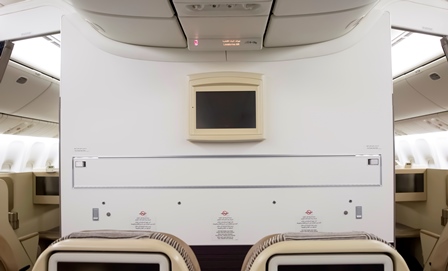
Whereas a lot of players in this segment have good channel partners, there are gaps. This means that there are countries and regions that are very poorly represented by many of the companies in this segment. This could provide for entries that would be much easier than trying to enter Germany or the big car companies. Some support by channel partners is exceptionally weak here, so this could be an interesting point to compete on. Many people want to be all things to all people, but a directed approach with a much more well-scoped value proposition for one particular application and one particular industry would let you get to revenue much faster.
2021 Outlook
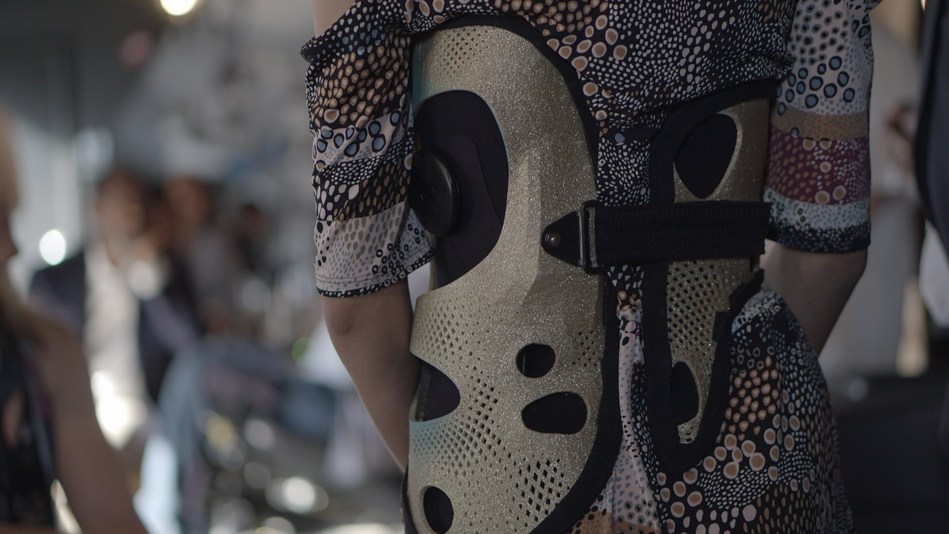
Scoliosis brace. (PRNewsfoto/UNYQ)
With the car industry dormant, there will be some knock-on effects for these players. Medically certified or medically specialized machines seem to be doing quite well in contrast. General industry and machine building demand seems to be growing. There will be keen, new interested parties willing to look at supply chain solutions, spare parts, local manufacturing, and bridge manufacturing with these systems now. On the whole, a slow start to the year should accelerate in later quarters.
Large Format 3D Printers
Large format systems are now often corporate flags being placed in the ground. They more accurately represent posturing and executive excitement than real revenue now for many participants. These large systems can build parts that no one else can but will have a tough time finding a market.
Market

Catamaran mold
In concrete and polymer construction formwork, molds and mold tooling seem to be an application set that really seems to be working for these systems. Composites are generally also a great area. Often projects, customers, and applications are tough to find, but solutions in large-scale applications for marine (boat hulls, casts, metal casting), aviation (cabin interior parts, molds for aircraft interiors, large scale jigs, tooling), space (test rigs, tooling, packaging, mockups) and oil and gas (components for pipelines, casts, molds) have been found. Typical customers are companies that see a future that isn’t there yet or someone with a large-scale, high-value part that is too expensive to make currently.

Aircraft tooling
Sales
Sales are typically low and done with local partners. Sometimes systems partners (such as the robotic arm manufacturers) or materials companies provide the most leads. Compared to the other segments of the industry, this is the least mature segment and we can expect lots of learning by everyone in the coming years.
Systems
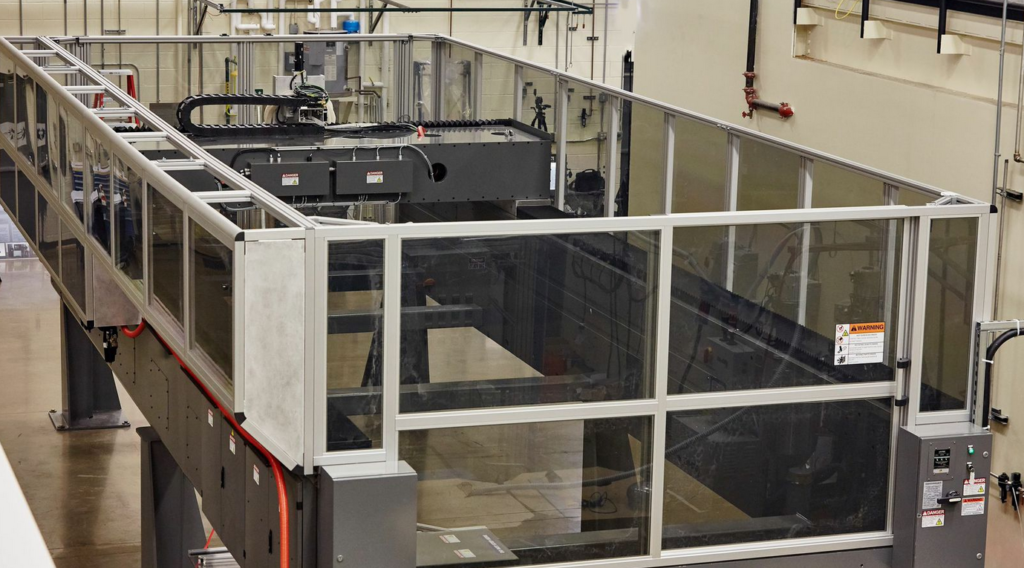
Cincinnati Incorporated’s Big Area Additive Manufacturing (BAAM) 3D printing system
Systems are typically comprised of industrial six-axis robotic arms with an extruder, sometimes mounted on a rail. Almost all seem to have issues with software as their main limitation. Lack of fundamental understanding of extrusion seems to be another limitation. For large multimeter components, accuracy and layer adhesion really are problems. Although positioning accuracy and other factors are often quoted, actual reliability and repeatability is currently low quite low.
Recommendations
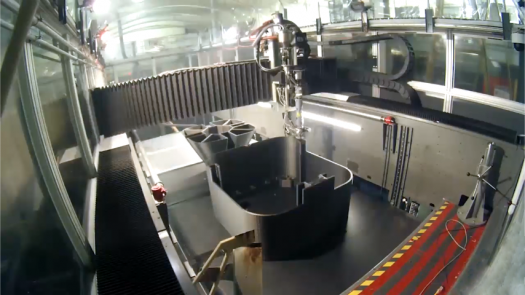
A submarine hull
Good business development in establishing actual business cases will be much more important in this segment than in most others. Many firms in this segment have very little to no revenue. Some leverage from excellent marketing or business development would go a long way to making someone a leader here.
In this segment, companies are often torn between doing fanciful systems integration/customization projects or sticking to selling standard systems. If you are making an application happen and they pay upfront, then perhaps this may be a useful path for you. Oftentimes, however, customers also don’t really know what requirements they need and these kinds of projects should be avoided.
Sales cycles tend to be very long in this segment. Use your own technology to sell the system. Make a huge part before the first meeting for them, rent them the machine so they can try it out or produce parts on demand for them for a set value. Get to cash as soon as possible because more than any other segment, this is a real tire kicker affair right now.
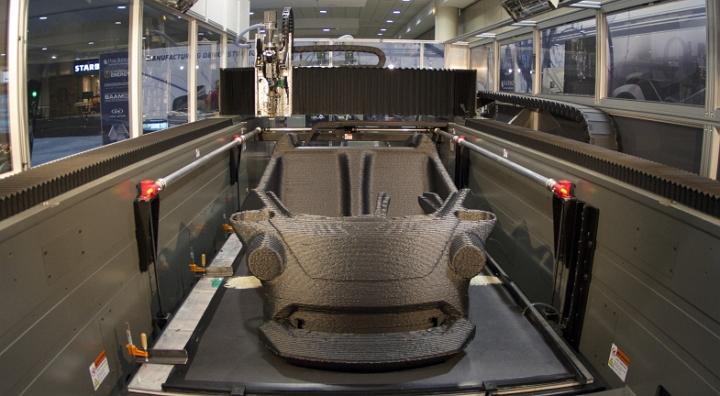
Car body
Critical Issues
More than in other segments, over-claiming and unsubstantiated promises are being used to stave a lack of sales. This harms the market long-term. There seems to be a lack of service capacity with these large parts. This is an opportunity, but also a way to speed up tragically long sales cycles. Given the relative size of Fanuc, ABB, Yaskawa, and Co. if this market matures, it would be logical that these companies enter into it in full force since they master most of the key skills needed, except extrusion.
Recommendation for Competition
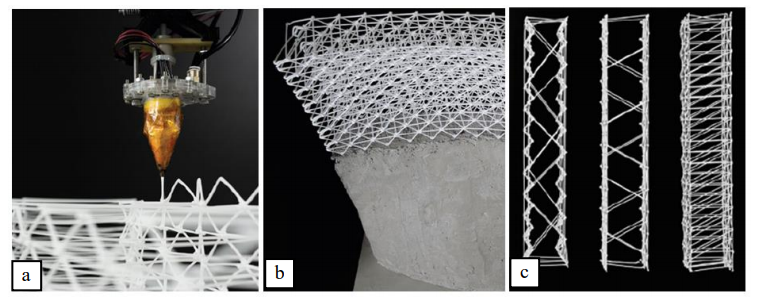
Mesh-mould combines formwork and reinforcement system for concrete
There will be little in the way of direct revenue to be found in this market now. But, there are still many applications to be explored. With most market participants making general large machines suited for everything and nothing, producing machines that fit a vertical better than any others would seem to be the path forward. Turning PETG water bottles into large scale structures for the US Army is just something that looks tiny but could be a significant application area. Optimizing your system for PC-ABS and reusable formwork may make your market entry specific, but it will help you talk to the right people.
2021 Outlook
There is really very little data to go on in this market. Surprisingly, construction projects seem to be advancing, as are some pure innovation projects. Marine and even oil and gas projects seem to be progressing here, as well. Projects driven materials companies seem to be moving forward also. But, it is currently a case of projects, so long-term engagements with companies that will slowly grow this market.

Left: completed Future Tree pavilion (Image: Basler & Hofmann AG, Stefan Kubli). Right: printed formwork, reinforcement cage, and finished concrete element.
Overall market trends for the Industrial FDM Market
- Overall systems are moving toward more open materials and a much higher availability of polymers than in other segments. Polymer driven adoption is much higher in this market than others. Familiar materials available in many grades from many vendors are a boon to this market.
- Going forward we would expect some polymer majors to pack up and leave while others double down. The larger the volume of the system, the more it could potentially drive volume growth for the firm per installation. Leveraging relationships with polymer companies could be a strong path forward.
- Custom polymers for custom applications can also lead to higher adoption and a faster implementation for these systems for specific applications, companies and parts. This is barely possible with powder bed fusion or SLA.
- More and more serious manufacturing implementations are happening in our sector and this means real long-term revenue but also complexity. Better deals but chunkier deals. Support from consultancy, systems integration, and partners is becoming more necessary for many firms.
- We’re seeing a convergence in the mid-market segment where several dozen OEMs think that they have five competitors but they really have several dozen.
- Some vendors in this market are fooling themselves and should really just throw in the towel.
- The larger the printer the more valuable an undiscovered new application can be. Yet, we can see a high degree of similar positioning, marketing and sales efforts with a whole world of parts out there ready to be made.
- We would expect a difficult start of the year for this segment but better fortunes toward the end of 2021 as many come to 3D printing for real manufacturing.
Subscribe to Our Email Newsletter
Stay up-to-date on all the latest news from the 3D printing industry and receive information and offers from third party vendors.
Print Services
Upload your 3D Models and get them printed quickly and efficiently.
You May Also Like
Heating Up: 3D Systems’ Scott Green Discusses 3D Printing’s Potential in the Data Center Industry
The relentless rise of NVIDIA, the steadily increasing pledges of major private and public investments in national infrastructure projects around the world, and the general cultural obsession with AI have...
3DPOD 260: John Hart on VulcanForms, MIT, Desktop Metal and More
John Hart is a Professor at MIT; he´s also the director of the Laboratory for Manufacturing and Productivity as well as the director of the Center for Advanced Production Technologies....
Etsy Design Rule Change Reduces Selection of 3D Printed Goods
Online marketplace Etsy has implemented a rule change requiring all 3D printed goods on the site to be original designs. The update to the site’s Creativity Standards states, ¨Items produced using...
E-Beam OEM Wayland Additive Partners with USC Racing to 3D Print Titanium Exhaust Collector
Every year, standards organization SAE International holds a competition called Formula SAE, in which students from both undergraduate and graduate programs design, build, and race small formula-style race cars. For...

































